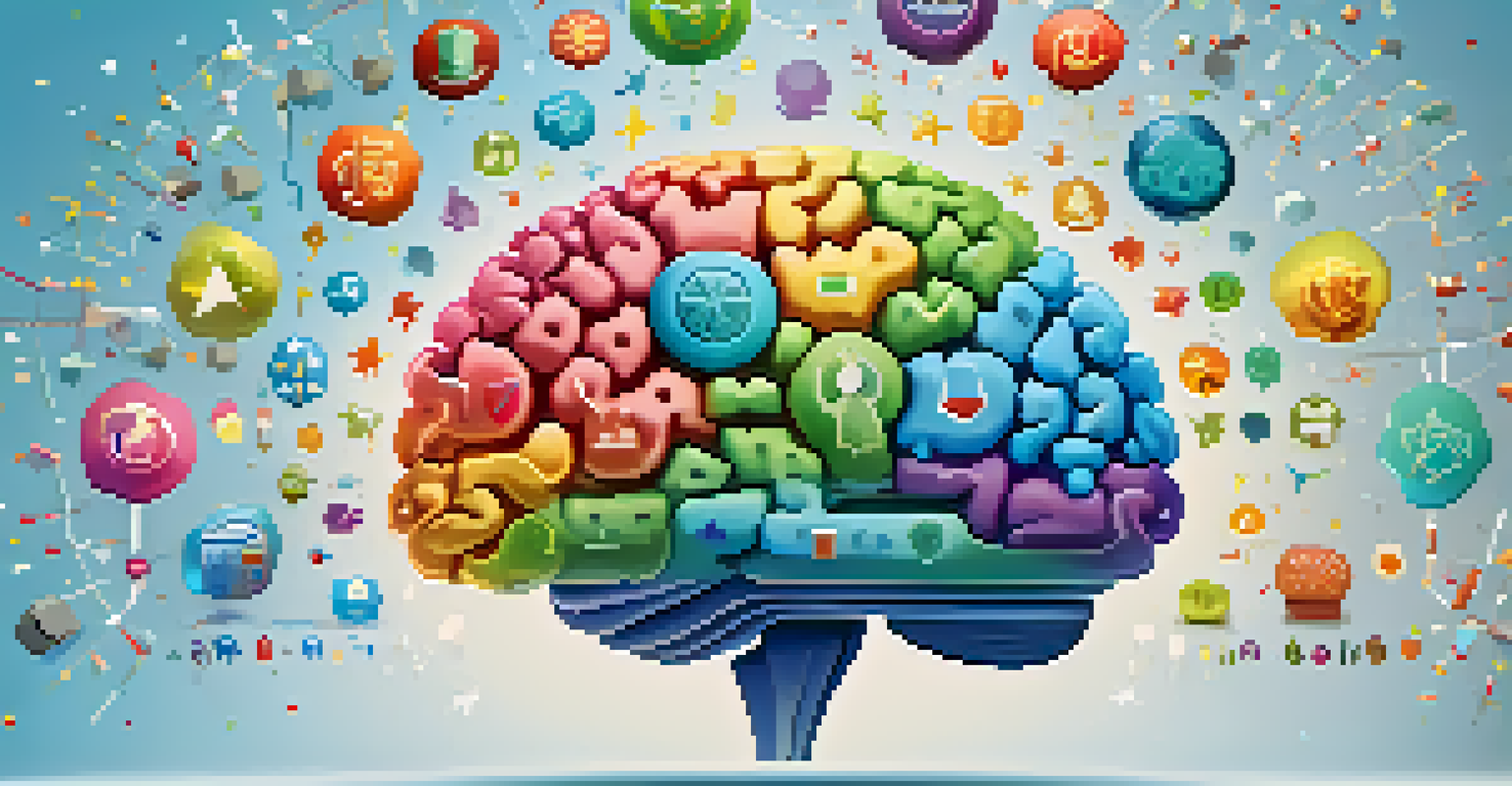Behaviorist Learning Theory: Insights from Neuroscience

Understanding Behaviorist Learning Theory Basics
Behaviorist Learning Theory, often associated with B.F. Skinner and John Watson, emphasizes observable behaviors as the primary basis for learning. This perspective posits that learning occurs through interactions with the environment, mainly through reinforcement and punishment. Rather than focusing on internal thoughts or emotions, behaviorists concentrate on how stimuli influence responses.
Behaviorism is a systematic approach to understanding the behavior of humans and other animals.
For instance, when a student receives praise for completing homework, the positive reinforcement can increase the likelihood of this behavior being repeated. This concept is crucial because it highlights the role of external factors in shaping how individuals learn and adapt. Essentially, behaviorism suggests that we can predict behavior based on identifiable stimuli and responses.
Moreover, this theory has practical applications in various fields, from education to behavioral therapy. Understanding its principles can help educators design effective learning environments that promote desired behaviors, ultimately leading to improved outcomes.
The Role of Reinforcement in Learning
Reinforcement is a central aspect of Behaviorist Learning Theory, acting as a crucial motivator for behavior change. Positive reinforcement involves providing a reward or incentive after a desired behavior, making it more likely to occur again. Conversely, negative reinforcement involves removing an unpleasant stimulus when a desired behavior is exhibited, also encouraging repetition of that behavior.

For example, a teacher might offer extra playtime as a reward for students who complete their assignments on time. This not only motivates the students but also fosters a positive learning environment. It’s fascinating to see how these mechanisms can shape habits and learning pathways.
Reinforcement Drives Learning
Positive and negative reinforcement are key motivators that influence behavior and learning outcomes.
Neuroscience provides insights into how reinforcement affects our brains, showing that the release of dopamine during rewarding experiences reinforces learning. This connection highlights the importance of understanding the underlying neurological processes that support behaviorist principles, bridging the gap between theory and practice.
Punishment and Its Impact on Learning
While reinforcement is often viewed positively, punishment in Behaviorist Learning Theory can also play a significant role. Punishment involves applying an unpleasant consequence following an undesired behavior, aiming to decrease its occurrence. However, it’s essential to approach punishment thoughtfully, as it can lead to fear or anxiety if misused.
The brain is the organ of learning, and it is the brain that the behaviorist must understand.
For instance, a student might face a reduction in privileges for disruptive behavior, which could discourage that behavior in the future. However, this method can backfire if it leads to resentment or disengagement from the learning process. Understanding the nuances of punishment is vital for educators and parents alike.
Neuroscientific research suggests that punishment activates different brain pathways than reinforcement. This underscores the complexity of human behavior and learning, emphasizing the need for a balanced approach that considers both reinforcement and punishment in educational practices.
Neuroscience: Shedding Light on Behaviorism
Neuroscience has significantly enriched our understanding of Behaviorist Learning Theory by uncovering the brain mechanisms behind learning and behavior modification. Advanced imaging techniques have allowed researchers to observe how various stimuli affect brain activity, providing insights into how we learn. This has led to a deeper appreciation of the biological underpinnings of behavior.
For example, studies have shown that certain areas of the brain, such as the amygdala and prefrontal cortex, are involved in processing rewards and punishments. This knowledge helps educators fine-tune their strategies to align with how our brains naturally function. By integrating neuroscience with behaviorism, we gain a more comprehensive view of the learning process.
Punishment's Complex Role
While punishment can deter undesirable behaviors, it must be applied carefully to avoid negative emotional impacts.
Furthermore, understanding these neural pathways can help in developing targeted interventions for individuals with learning disabilities, tailoring approaches that resonate with their unique brain function. This intersection of neuroscience and behaviorism paves the way for more effective educational practices.
The Importance of Context in Learning
Context plays a crucial role in Behaviorist Learning Theory, influencing how behaviors are learned and reinforced. The environment in which learning takes place can significantly affect the outcomes of behavioral interventions. For instance, a student who learns math concepts in a supportive and engaging classroom may perform better than one in a chaotic environment.
Research highlights that learners are more likely to engage in behaviors that are reinforced in specific contexts. This phenomenon emphasizes the importance of creating conducive learning environments that support positive behaviors. Understanding the context can help educators design experiences that maximize learning potential.
Neuroscience further underscores the significance of context, showing how different environments can trigger various responses in the brain. By considering the context, teachers can cultivate settings that enhance learning and encourage positive behaviors, ultimately leading to improved educational outcomes.
Applications of Behaviorist Learning Theory in Education
The applications of Behaviorist Learning Theory in education are vast and varied. Teachers often use strategies based on reinforcement to help students acquire new skills and knowledge. For example, implementing a reward system for classroom participation can motivate students to engage more actively in discussions.
Moreover, behaviorist techniques such as systematic desensitization are used to address anxiety-related issues in students. By gradually introducing them to anxiety-inducing situations in a controlled manner, teachers can help them build coping mechanisms and reduce fear. This practical application demonstrates the real-world impact of behaviorist principles.
Neuroscience Enhances Behaviorism
Integrating neuroscience with behaviorist principles provides deeper insights into learning processes and effective educational strategies.
Incorporating technology, such as educational apps that utilize gamification principles, can also reinforce behaviorist strategies. By providing instant feedback and rewards, these tools create engaging learning experiences that resonate with today’s digital-savvy learners.
Future Directions: Merging Behaviorism and Neuroscience
As both Behaviorist Learning Theory and neuroscience continue to evolve, their integration presents exciting possibilities for the future of education. Researchers are increasingly exploring how insights from neuroscience can enhance behaviorist practices, leading to more effective teaching methods. This collaboration holds the potential to create a more nuanced understanding of how learning occurs.
For instance, emerging studies are investigating how neurofeedback can be used to reinforce desired behaviors. By monitoring brain activity in real-time, educators could potentially guide students towards better focus and engagement. This innovative approach could revolutionize traditional behaviorist strategies, making them more personalized and effective.

Looking ahead, the fusion of behaviorism and neuroscience may pave the way for tailored educational experiences that cater to individual learning styles and needs. By embracing this interdisciplinary approach, we can unlock new pathways for student success and foster a deeper appreciation for the complexities of learning.